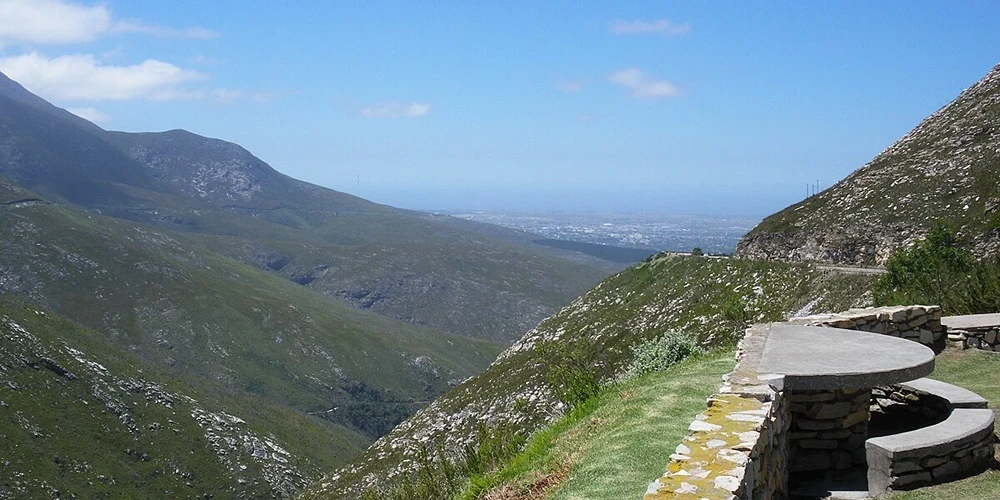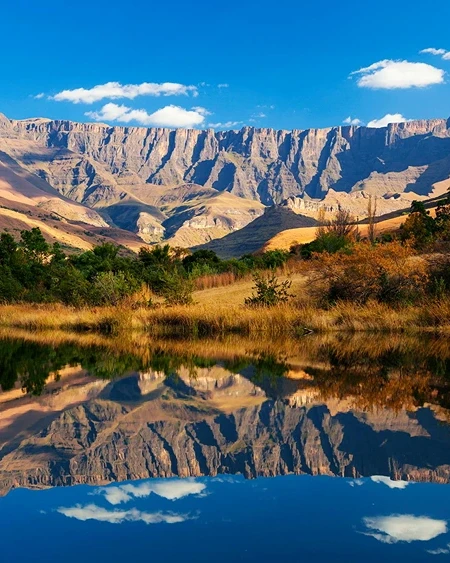Are you ready to uncover the hidden gem of the Western Cape? The Outeniqua Mountains, stretching from Plettenberg Bay to Riversdale, offer a scenic escape for hikers and nature enthusiasts. Known for their rugged peaks, deep valleys, and lush vegetation, these mountains are a testament to the natural beauty of South Africa. In this article, Xpat Journeys delves into everything you need to know about the Outeniqua Mountains, from popular hiking trails and wildlife to historical significance and tourist activities. Prepare to embark on an informative journey through these majestic peaks and trails.
Overview of the Outeniqua Mountains
The Outeniqua Mountains are situated in the Western Cape province of South Africa. This majestic range stretches from Plettenberg Bay in the east to Riversdale in the west and runs parallel to the Garden Route coastline approximately 19 kilometers from the beach. The landscape is defined by rugged peaks, deep valleys, and lush vegetation, presenting a striking contrast between the coastal plains and the mountainous terrain.
| Feature | Description |
| Elevation | Rugged peaks reaching up to 1,569 meters |
| Vegetation | Lush, diverse flora including fynbos and forested areas |
| Valleys | Deep, scenic valleys rich in biodiversity |
| Proximity to Coast | Approximately 19km from the Garden Route coastline |
| Nearby Towns | George, Plettenberg Bay, Riversdale |
The Outeniqua Mountains play a crucial role in the local ecosystem. Their diverse flora and fauna provide a habitat for many species of plants and animals, some of which are endemic to the region. The mountains’ vegetation also contributes to water regulation and soil conservation, making them vital for environmental sustainability.
From a tourism perspective, the Outeniqua Mountains are a significant attraction. Visitors flock to the area for its stunning hiking trails, scenic views, and various outdoor activities. The proximity to notable towns like George offers convenient access to amenities while allowing tourists to immerse themselves in the natural beauty of the mountain range.
Popular Hiking Trails in the Outeniqua Mountains
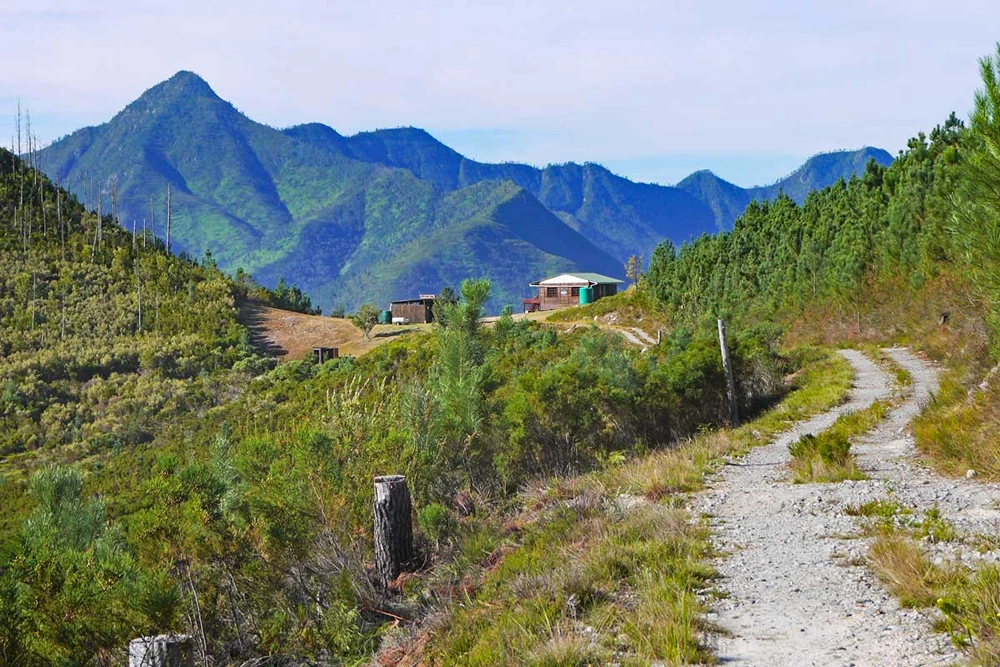
The Outeniqua Mountains offer several popular hiking trails that attract both seasoned hikers and casual walkers. Each trail provides unique challenges and stunning scenic views, making the region a haven for outdoor enthusiasts.
Doring Rivier Peak
Standing at 1,090 meters, Doring Rivier Peak is the highest point on the 14-kilometer Doringrivier Fynbos Trail. This trail is known for its rich biodiversity, with diverse fynbos vegetation lining the path. Hikers can expect a moderate to challenging trek, featuring a mix of steep ascents and gentler slopes. The panoramic views from the peak make the effort well worth it.
Vensterberg Peak
Vensterberg Peak reaches an elevation of 1,309 meters and is accessible via a trail starting from the N9, just north of the Outeniqua Pass. The trail is moderately difficult, with rocky sections that require careful navigation. Vensterberg offers spectacular views of the surrounding valleys and mountains, making it a favorite for those seeking a rewarding hike with significant elevation gain.
Keurkop Peak
At 1,170 meters, Keurkop Peak is a popular destination for early morning hikers. The trail is short and steep, providing a quick but intense workout. The ascent is characterized by a series of switchbacks that lead to the summit, where hikers are greeted with stunning sunrise views over the Outeniqua range. This trail is ideal for those looking to experience the beauty of the mountains in a shorter timeframe.
George Peak
George Peak is one of the most challenging hikes in the Outeniqua Mountains. The route features a vertical kilometer, with a 1,000-meter elevation gain over just 4 kilometers. Hikers should be prepared for a strenuous climb that demands a high level of fitness. The summit, at 1,336 meters, offers breathtaking views that extend across the entire mountain range and the surrounding landscapes.
Essential Hiking Gear for Outeniqua Trails:
- Sturdy hiking boots
- Adequate water supply
- Weather-appropriate clothing
- Navigation tools (map, compass, or GPS)
- First-aid kit
Flora and Fauna in the Outeniqua Mountains
The Outeniqua Mountains are renowned for their rich biodiversity, making them a paradise for nature enthusiasts. The ecosystem supports a variety of plant and animal species, contributing significantly to the region’s ecological diversity. Pristine vegetation, which managed to survive the 2018 wildfires, can still be found along certain trails. This lush environment includes fynbos, forested areas, and endemic plant species that thrive in the unique climatic conditions of the mountains. The Outeniqua Mountains also serve as a habitat for numerous birds and small mammals, creating a vibrant ecosystem teeming with life.
Notable Plant and Animal Species:
- King Protea
- Outeniqua Yellowwood
- Cape Sugarbird
- Knysna Turaco
- Bushbuck
- Cape Leopard
- Southern Double-collared Sunbird
Conservation efforts have been critical in preserving the unique flora and fauna of the Outeniqua Mountains. Following the 2018 wildfires, numerous initiatives were launched to restore damaged areas and protect surviving vegetation. These efforts have helped to maintain the ecological balance and ensure that the diverse plant and animal life continues to flourish. The impact of the wildfires highlighted the importance of ongoing conservation work to safeguard this precious ecosystem for future generations.
Historical Significance of the Outeniqua Mountains
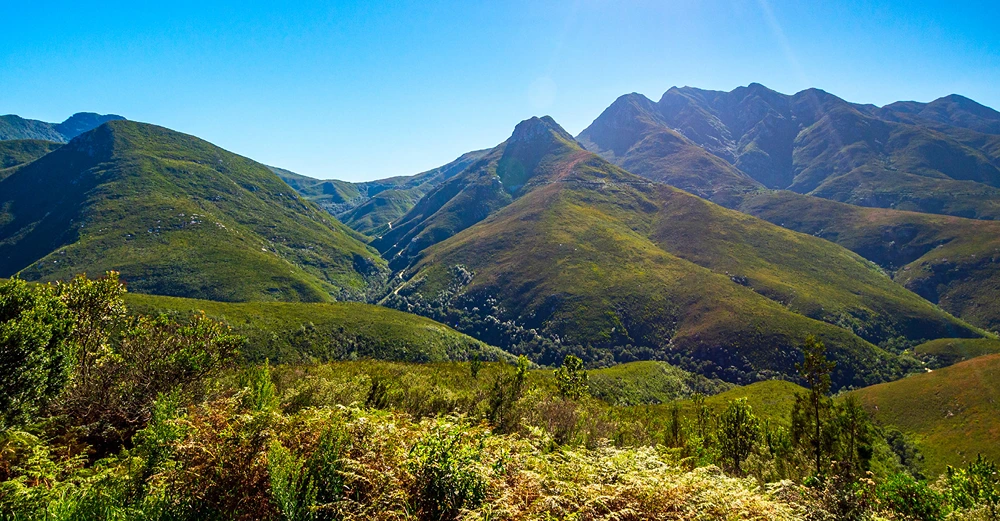
The Outeniqua Mountains hold a rich historical significance, deeply rooted in the traditions of indigenous cultures. The name “Outeniqua” originates from the Khoikhoi language, translating to “man laden with honey,” a reference to the region’s abundant wild honey. These mountains were crucial in the daily lives of the indigenous people, providing resources, shelter, and strategic vantage points. Over time, the mountains have become a symbol of natural wealth and historical depth, reflecting centuries of human interaction with the landscape.
The cultural significance of the Outeniqua Mountains is equally profound. Local legends and stories are intertwined with the peaks and valleys, painting a picture of a land revered and respected by its inhabitants. One such legend speaks of the “Honey Man,” a mythical figure believed to have lived in the mountains, collecting honey and sharing it with those in need. These tales highlight the deep connection between the local communities and their environment, emphasizing the mountains’ role in their cultural identity.
Several historical sites and landmarks dot the Outeniqua Mountains, serving as tangible reminders of the past. Ancient rock art, believed to be the work of the San people, can be found in secluded areas, offering a glimpse into the lives of the early inhabitants. Additionally, old trade routes and pathways used by indigenous tribes and later by European settlers crisscross the mountains, marking the trails of human history etched into the rugged terrain.
Tourist Activities in the Outeniqua Mountains
The Outeniqua Mountains offer a myriad of tourist activities that cater to diverse interests. Hiking remains one of the most popular activities, with several well-marked trails that traverse the lush landscapes and rugged peaks. Additionally, the mountains are a hotspot for adventure enthusiasts, offering rock climbing and paragliding opportunities. The unique terrain and varied elevations make these activities both challenging and exhilarating. Visitors can also enjoy mountain biking, bird watching, and exploring the rich biodiversity that the region has to offer.
Top Adventure Activities:
- Rock Climbing
- Paragliding
- Mountain Biking
- Bird Watching
- Exploring Biodiversity
For photography enthusiasts, the Outeniqua Mountains provide exceptional scenic spots that capture the area’s natural beauty. Locations such as George Peak and Cradock Peak offer panoramic views that are perfect for landscape photography. The interplay of light and shadow across the valleys and peaks, especially during sunrise and sunset, creates stunning visual compositions. Photographers will find ample opportunities to document the vibrant flora and fauna, as well as the dramatic geological formations.
In addition to outdoor adventures, the Outeniqua Mountains boast several notable attractions. The Montagu Pass, an engineering marvel from the 19th century, offers a historical journey through the mountains. The Outeniqua Transport Museum in George provides insights into the region’s railway history. These attractions, combined with the natural splendor of the mountains, ensure a fulfilling experience for every visitor.
Accommodation Options in the Outeniqua Mountains
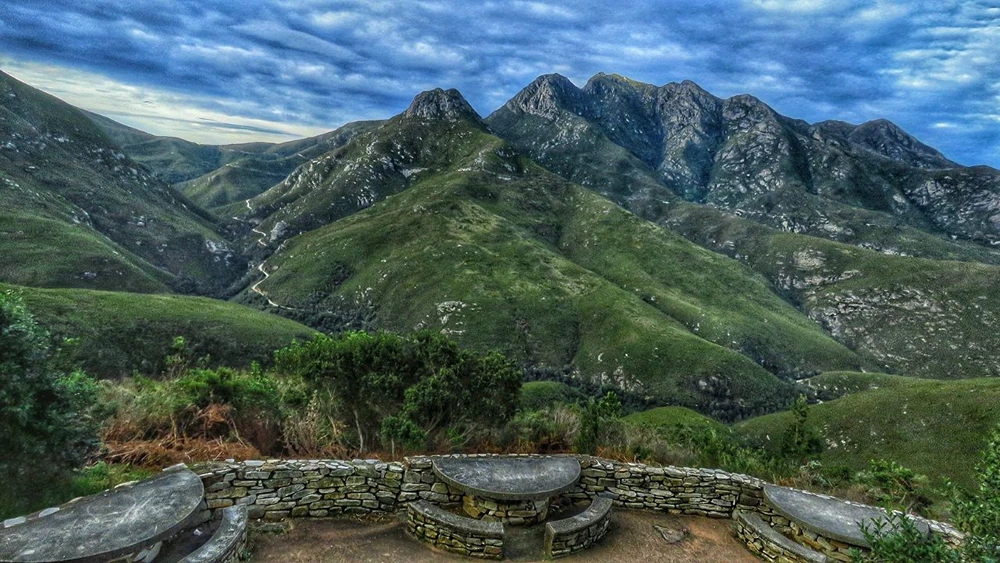
Visitors to the Outeniqua Mountains have a variety of accommodation options to choose from, catering to different preferences and budgets. From luxurious mountain lodges to rustic game farm accommodations and convenient campsites, there’s something for everyone. Lodges such as the Outeniqua Mountain Lodge offer high-end amenities and stunning views, providing a comfortable and scenic retreat. For those seeking a more immersive experience, game farm accommodations allow guests to stay close to nature and potentially spot wildlife. Campsites are also available for budget-conscious travelers or those who prefer a more adventurous stay.
| Accommodation Type | Description | Price Range |
| Luxury Lodge | High-end amenities, scenic views, comfortable retreats | $$$ |
| Game Farm | Close to nature, potential wildlife sightings | $$ |
| Hotel | Modern comforts, convenient locations | $$ |
| Guest House | Cozy, home-like atmosphere | $-$$ |
| Campsite | Budget-friendly, outdoor experience | $ |
For luxury seekers, the Outeniqua Mountain Lodge is highly recommended due to its plush amenities and breathtaking views. Nature enthusiasts will enjoy staying at game farms, where the proximity to wildlife enhances the experience. Hotels and guest houses are ideal for travelers looking for modern conveniences and a homely feel, respectively. Budget travelers and adventure aficionados may find campsites to be the best option, offering an affordable way to enjoy the natural surroundings of the Outeniqua Mountains.
Best Time to Visit the Outeniqua Mountains
The best times to visit the Outeniqua Mountains are during spring (September to November) and autumn (March to May) when the weather is mild and ideal for outdoor activities. Summer can be hot, with temperatures sometimes exceeding 30°C (86°F), making strenuous hikes challenging. Winter brings cooler temperatures and the possibility of snow at higher elevations, creating a different but equally captivating landscape.
Seasonal Activities:
- Spring wildflower viewing
- Autumn foliage hikes
- Summer paragliding
- Winter snow trekking
- Year-round bird watching
When planning a visit, it’s essential to consider the seasonal weather conditions to enhance your experience. In spring, the blooming wildflowers make for picturesque hikes, while autumn offers vibrant foliage and cooler temperatures. Summer is best for water-based activities and paragliding, but start early to avoid the midday heat. Winter, though colder, provides a unique opportunity for snow trekking and capturing the serene, snow-dusted scenery. Year-round, bird watchers can enjoy spotting diverse avian species that inhabit the region.
Final Words
Exploring the Outeniqua Mountains offers a remarkable blend of rugged terrain, rich biodiversity, and historical significance.
Adventurers can enjoy diverse hiking trails such as Doring Rivier Peak and George Peak.
The flora and fauna add another layer of interest, while cultural insights give depth to the experience.
Tourist activities, from rock climbing to photography, provide ample opportunities for engagement.
Numerous accommodation options cater to various preferences.
Embracing the best time to visit ensures a more enjoyable outing.
The Outeniqua Mountains promise a rewarding and enriching experience for all who visit.
FAQ
What is the meaning of the word Outeniqua?
What is the highest point in the Outeniqua?
What is the history of the Outeniqua Mountains?
Where is Outeniqua?
Are there any hiking trails in the Outeniqua Mountains?
What can I do in the Outeniqua Mountains?
Top Attractions
Are you ready to explore one of South Africa's most…
Why would an ancient civilization dedicate 180 years to…
Why did the ancient Egyptians choose a secluded desert…


